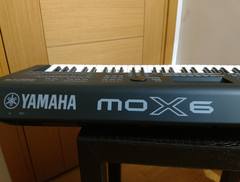The mindset powering AMD's Radeon: people and tech first, business 2nd
-
Topics
-
0
-
0
-
0
-
0
-
1
-
Real_Smoky ·
Posted in Graphics Cards1 -
ArushM ·
Posted in Troubleshooting2 -
3
-
2
-
jobba57 ·
Posted in New Builds and Planning3
-


.png.255947720031a641abdac78e663b681c.png)
.thumb.jpg.271b3e6811b76c1a6c28065117ae6c81.jpg)













Create an account or sign in to comment
You need to be a member in order to leave a comment
Create an account
Sign up for a new account in our community. It's easy!
Register a new accountSign in
Already have an account? Sign in here.
Sign In Now